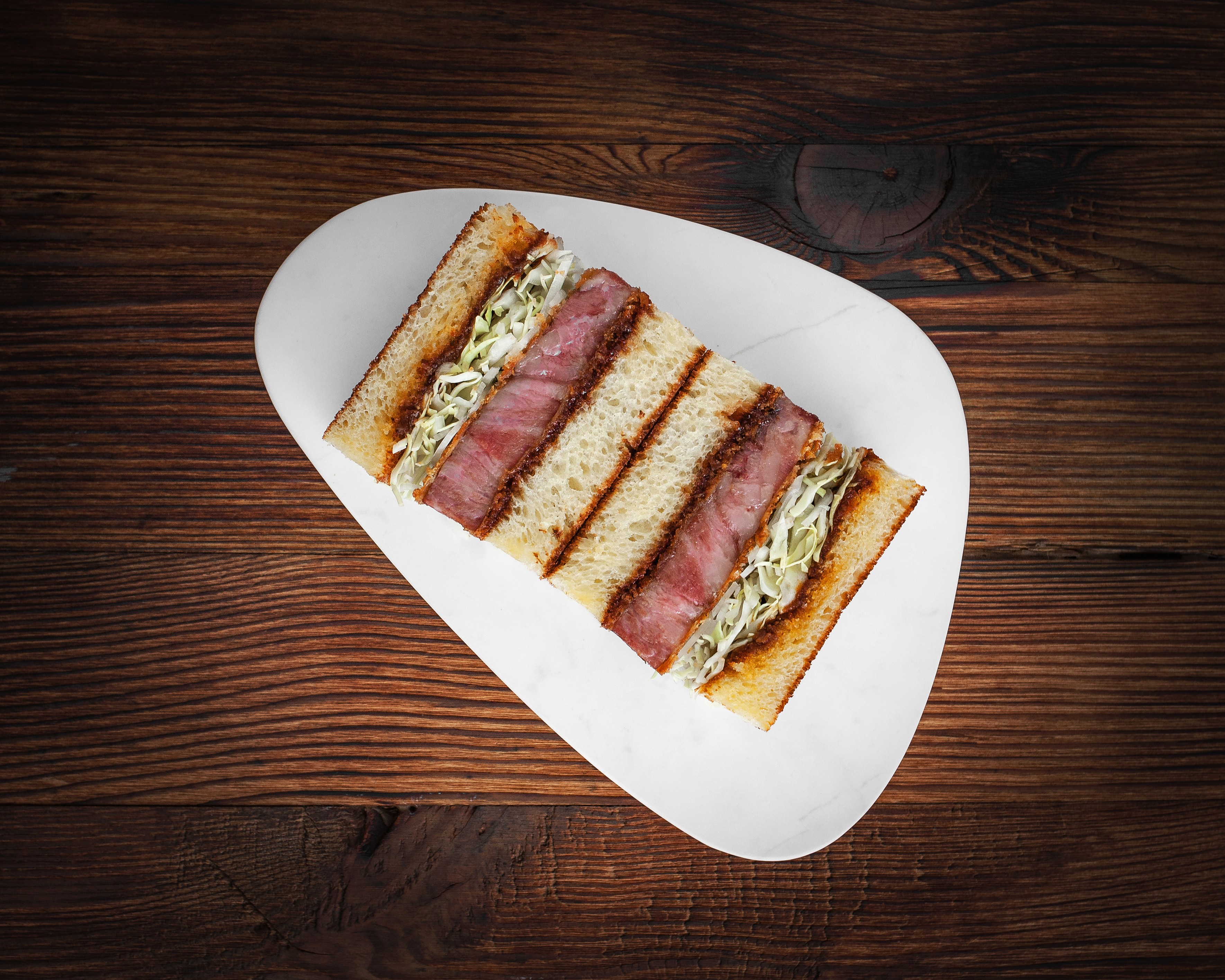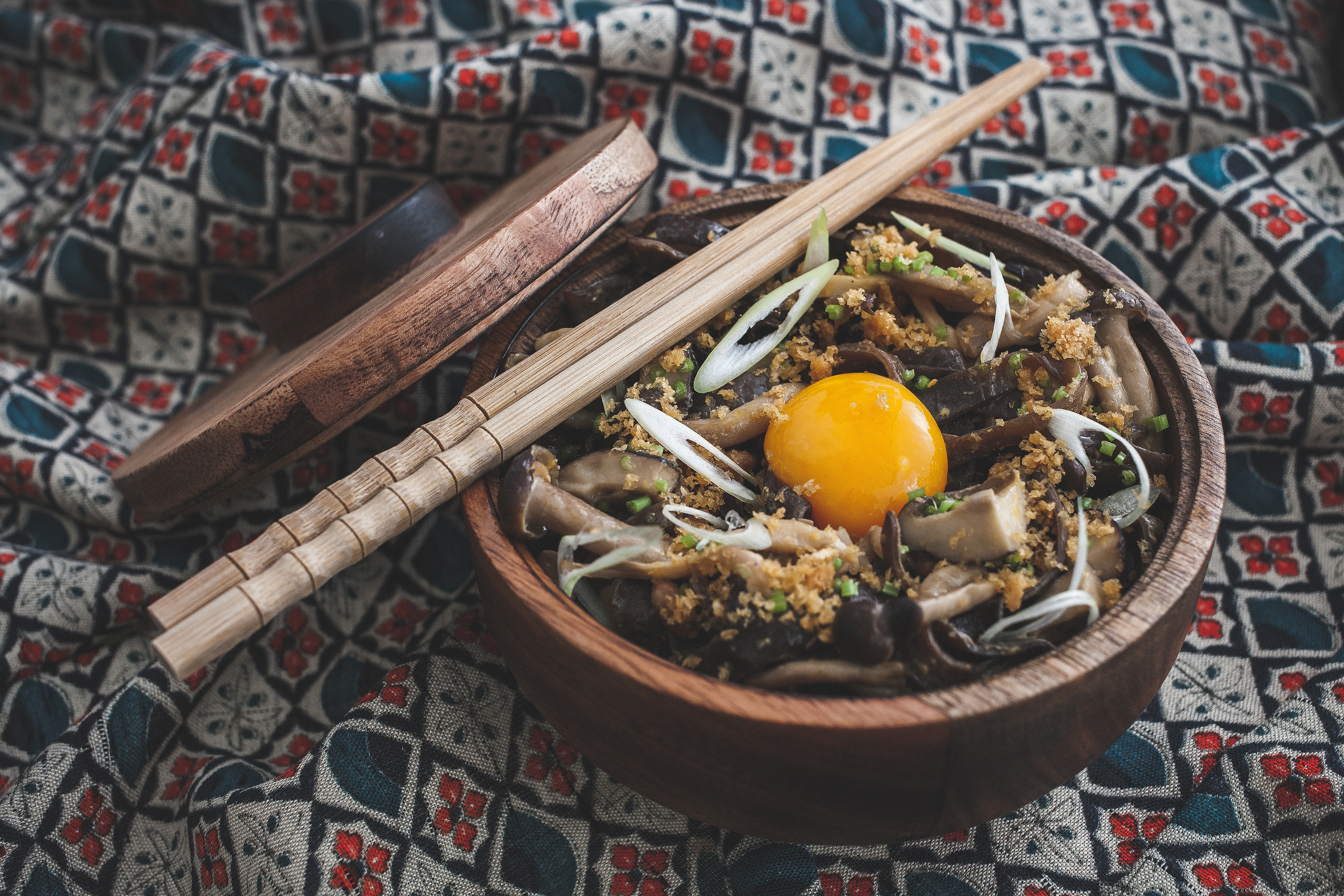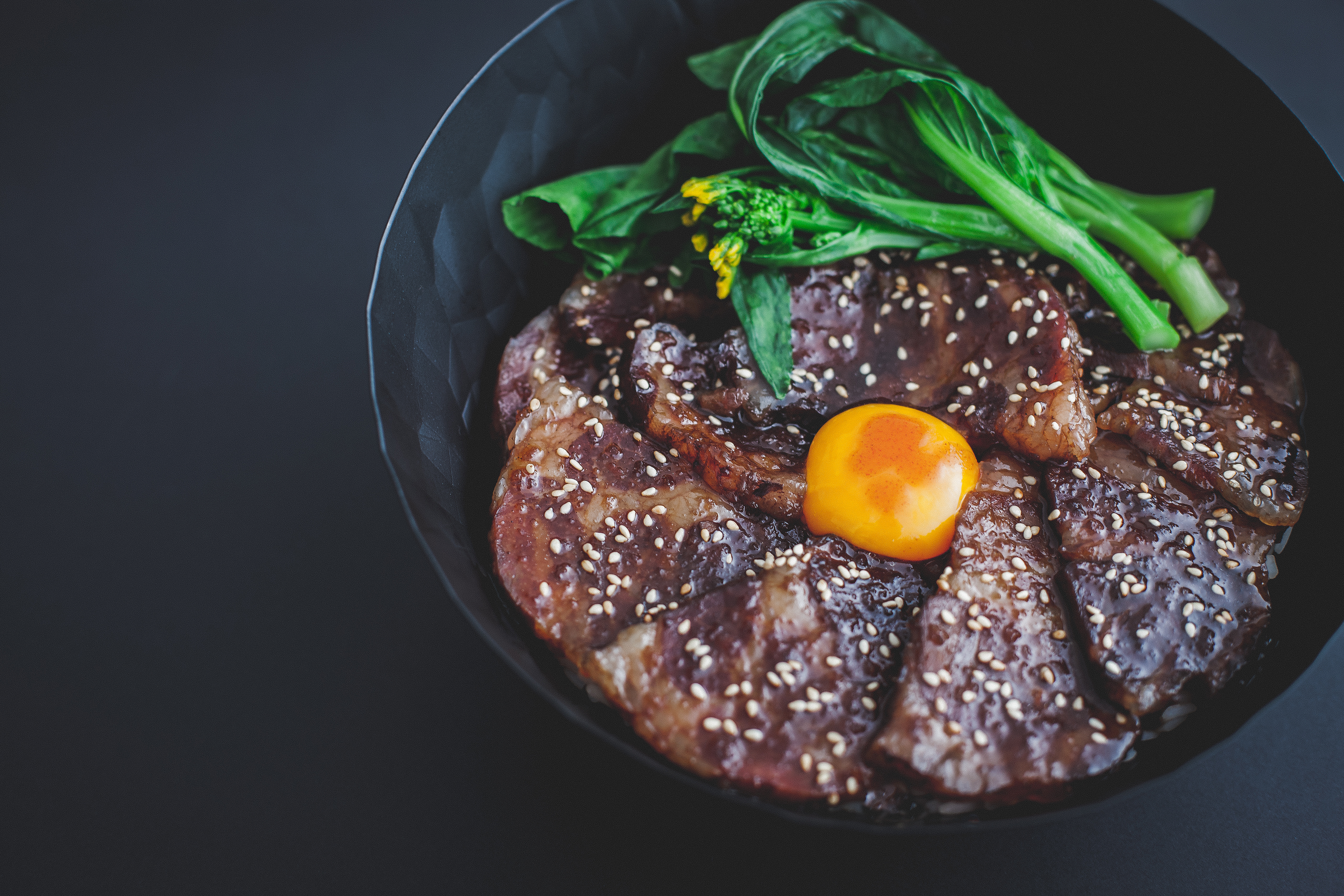Port met with Ana Gonçalves and Zijun Meng to discuss their newest restaurant TÓU, cooking as sketchwork and the importance of good quality produce

I met with Ana Gonçalves and Zijun Meng a hot Wednesday morning in August, at their permanent residency TĀ TĀ Eatery at Tayer and Elementary in Shoreditch. Although certainly a power duo at the centre of London’s culinary scene, the award-winning proponents of the trendy Katsu Sando – an aesthetically pleasing and traditionally Japanese sandwich – the pair are sensed with humility and an honesty that is refreshing. Talking over the menus at TĀ TĀ Eatery and TÓU, Meng describes the complexity of the apparently simple dish: “There’s one piece of bread, one piece of fish. But together, it has to be amazing. To be able to reach that amazingness, that requires a lot of experience. And I have to say, I am not there yet”.
And yet, the pair have developed quickly, through a number of residencies at Curio Cabal in Haggerston, Borough Wines in Kensal Rise, a two week “takeover” at Cam in Paris’s China Town and Druid Street Market in Dalston Yard, securing a permanent space in the form of TĀ TĀ Eatery at Tayer and Elementary and now launching their newest venture TÓU, one of seven kitchens at the Arcade Food Theatre in Soho. The new restaurant brings Ana’s and Meng’s unique vision and blend of Portuguese and Chinese cuisine to the table in the form of two versions of the Katsu Sando as well as a rotating dish in the form of a rice bowl or a hot dog.
The couple’s businesses all appear to begin with the letter {t}. Although, as Ana confesses, this is merely the result of a happy accident. Meng gestures to his head as he explains the reasoning behind TÓU, pronounced toe and translating as ‘head’ from the Chinese: “we didn’t really think about the meaning when we named it. But further along, we thought it could be a great name, looking at how pubs around London name themselves: The Queens Lake, The Bricklayers Arms, etc… And then this. This is just ‘head’. We didn’t say whose head…”
Their first ever attempt at the Katsu Sando was in Portugal, in a collaboration with António Galapito at his restaurant Prado in Lisbon. Galapito is the former head-chef at Taberna do Mercado in Spitalfields, owned by Nuno Mendes – who both Ana and Meng worked for for a number of years at different projects, including his pop-up The Loft Project, Viajante and finally Chiltern Firehouse.
Port spoke to Zijun Meng and Ana Gonçalves on their journey into London’s restaurant scene, the appeal of the Katsu Sando and the future of TÓU and TĀ TĀ.

Where did your initial love of cooking come from?
Zijun Meng: I started cooking in 2009. Before that, I was an art student. So after graduation in 2008, I came to London. I was looking for an art related job but ‘accidentally’ fell into cooking. I walked into a kitchen and I haven’t left since. I worked in a few different places, gastropubs, members club, but very shortly after I was introduced to Nuno Mendes. After 3 months of working in the food industry, I met Nuno. From there, I just worked myself up alongside him.
Ana Gonçalves: I was doing Graphic Design after University and I got bored. I came to London to do the Cordon Bleu. It was a similar entry into cooking. I started ‘stageing’ with Nuno Mendes, and then at The Loft and then after a few months and then all the way until about 4 years ago.
Did you always know you wanted to go into cooking?
AG: It wasn’t a real plan. But, I have always been involved in helping out around the home and for friends and stuff.
ZJ: Me too. I have always had this familial approach in mind. You know, with art it is more conceptual, it is a lot to do with ideas.When you learn that what you bring, you cannot make a living out of it, you have to use your hands. I personally always loved cooking as a hobby. So I thought, why don’t I just, at least, see how it goes. And, I never left.
You have developed quickly. Were you met with any particular challenges along the way?
AG: Meng always adapts his food to the kind of environment we have and the kind of kitchen we have. So, it’s a challenge but it’s a good challenge. It makes our food different. It is not always the same thing. For example, in Kensal Rise we didn’t have a barbecue there, because there was no extraction, so we just had to scrap that idea. Before, in Haggerston, it was all about barbecue. And then, in Kilburn we had a little barbecue again. And here (TĀ TĀ Eatery ) it’s pretty much an induction and a plancher.
You met whilst both working for Nuno Mendes. Did this have a formative impact on your cooking?
ZM: The biggest influence I took away from Nuno is to be open minded. Because, the way I grew in the company was that he just left me to do whatever I wanted to do. Obviously I always kept a close eye on what was going on. I was on pastries back in the day, so I always had my eye on what the savoury kitchen was doing, and I would come up with dishes that would compliment the savoury ones. I don’t particularly like classic pastry. Even today, if I had a tasting menu I would never particularly choose to focus on that. It is interesting to consider why it has to be a certain way, why it has to be chocolate, for example.
AG: Yes, I think, for me, it was that freedom that Nuno gave us. When we started, me and Zijun, we were all pretty junior. Everyone was a commis-chef. There were a couple of more experienced people but everyone was able to pitch in with ideas. When you work with Nuno, he likes to work very openly as everyone’s ideas allow the restaurant to grow. He lets you be involved, which is very important. I’ve never worked with anyone but Nuno, but I’ve heard stories where it’s almost a military operation. Every idea should be important, even an idea about how to set up or how to serve a dish should be considered.
Do you think you take that managerial approach here at TĀ TĀ?
AG: It is very different as it is a very small operation. Meng does most of the cooking. This is the biggest team we’ve ever had, which is three chefs.
ZM: Over here, it is more like a sketch. Back in the day, with Nuno, it was a statement. If you look at it from an artist’s point of view, that was more like a painting, where you spend a certain amount of time to work on the vision and that vision stays for a certain time, whereas over here everything is a sketch. We change the menu every day, every week, and there is no lasting date.
AG: Also, I want to say, because I think it is really important. The way Meng has been cooking, for the last year, is that he doesn’t think about the dish in terms of the dish first and then the produce. It is more about what our suppliers, our farmers, what they have for us, and then we work on the dish from there. That’s why comparing to Viajante or to that kind of kitchen, it isn’t like that at all. Nuno had an idea and then we would work on that idea. Here, it is more that the idea comes after you see the product.

Can you talk about the partners you work with?
ZM: For TĀ TĀ , we mainly work with small farmers. As individuals, we know their products, what they are capable of. For me, it is about finding the best product from all of them. The number one rule with all of that, is to make sure the animal had a good life, was treated well, they were grass fed and are locally sourced, from England. We want to reduce the chances of the animal being stressed, which ultimately affects the meat and its texture. After that, we get a small part of the animal, for example the fillet, we take three or four weeks to try and test it, if we like the flavour and then the whole animal goes into further ageing. That is not really doable with the larger suppliers as the stock just becomes lost, conversations get lost, whilst with the smaller ones, it forces us to work closely, and to keep a close eye on the produce. Fish is the same. I try not to buy anything that comes from the market, even from markets down in Cornwall and Devon where there is good fish we still try not to. We try to support the individuals that work from a small boat, the variety of fish could be very limited but it will be good. And that is what TĀ TĀ Eatery is about, it’s about connecting people; connecting the guest the chef and the supplier. There is a story to tell. Where does the produce come from? That is the story we are interested in. There are certain fish that small boats are just unable to catch and we use what we are given, adapting constantly.
AG: We also work with Robin Williams at NamaYasai (a Japanese farm in Sussex). He does mainly Japanese or Asian vegetables, all organically grown, super cool stuff.
ZM: They grow everything in a very sustainable way and they don’t use any nasty stuff on their crops. Sometimes when I receive the leaves from them, they are full of holes, eaten by bugs, and it is actually very hard for me to serve them, but I’d rather that. At least you are eating some good stuff, and not something seemingly perfect that actually has tons of chemicals.
Can you talk a little about how you prepare your meat?
ZM: We basically improvise. I never knew that this method would work before so we just tried. After testing, for some time, we realise actually it does work. So, for example, we don’t have an extensive ageing fridge. What we do is normal, commercial. We don’t really age meat in-house, as it just requires too much space. Only fish. So you once you understand what the condition is that you need, we add those elements into the fridge – pimp it out. So we have a little USB fan that we plug in and we put into the fridge to create extra air flow and we then use Himalayan salt blocks to reduce the humidity in the fridge and obviously they are extremely fresh when we receive them. We just need to prepare them, dry them very well with a paper towel, and just let them hang. It improves the texture and the taste.
How would you explain Umami?
ZM: Even people who don’t know what umami is, they know what tastes good. What tastes good is umami. It could be too sour, too spicy, too sweet, too something, a bit off-balance.
AG: If you want to lick the plate – that’s umami.
What do you think it is about the Katsu Sando that is so appealing?
AG: I think, first of all, it is the visual. You look at it and you can see everything inside. Visually people are very interested. Also, people like it because it is very different. The sando is just fried pork with some mayo. It’s pretty basic, like a schnitzel sando, you know. For us, it’s different. It’s proper, amazing meat. There’s a really big piece of it. The bread is different. When you eat that sandwich, you realise it’s a whole meal in one sando. And although people comment on the price, that comment is always accompanied by a “but”. There is not a single person that has ever said they regret paying that price for what they get.

Why is rice so important to you guys?
ZM: That’s where Eatery began. In the beginning we were called ‘TĀ TĀ Rice Eatery’.
AG: The first time we talked about opening something, Meng said he wanted to be the king of rice. And it’s hard, you know, as in street food you have a lot of competition. When you have a rice bowl and the person in the stall next to you has chicken wings, people go for what they know. It’s hard to convince people that you can do so much cool stuff with rice. Personally, we just love rice. If I could, I would eat rice every day.
Do you have a particular cooking method?
ZM: Washing. The way you wash it. You have to wash it many times and very gently, so you don’t break the grain. Using the least amount of water possible, whilst still making sure that the rice is fully cooked and soaking up all the water. If you add too much water you get over-cooked rice, but it can’t be dry either. So, really it is just lots of care.
AG: This is for the rice we do at TĀ TĀ and TÓU as well. When we think about home, we do a lot of saucy rice, more like the Portuguese style but with Japanese rice. Almost like a risotto, very saucy.
I watched ‘Jiro Dreams of Sushi’ recently, and there is a famous scene in it where he talks about the process of cooking rice and the years it takes for his apprentices to learn the art… I thought that was a nice way, quite a poetic way of looking at it…
ZM: It’s not really only about the way you wash rice, as you can learn that very quickly. Its more about the meditative process, about modifying ones attitude to cooking. At the end of the day, sushi is very simple – put raw fish on top of some cooked rice, that’s it. But to be able to really separate yourself from others, you need a lot of attention to detail, a lot of patience, because for them it doesn’t change so much, there are only a number of ingredients you can use. It’s more about patience and focus, which I think are sometimes the most valuable parts of cooking. Sometimes when we have too many things to work with, it can go off track a little. Having too many choices around you is not necessarily a good thing.

Is accessibility important to you? How do you approach your client?
AG: It’s difficult. Because as much as you want to give everyone access to your food, you also want to provide good produce. And unfortunately for that level, our prices come into it accordingly. Our food is not super expensive, but it’s not super cheap either, and that is a reflection of the quality of the produce we provide. It’s definitely something we struggle with, as sometimes we have to raise our prices.
ZJ: To us, the price part always comes second. The first part is about taste, what the mouth experiences… We look at the product first, then money, and then, often, we realise, that our concept is employing so many different factors all-together that inevitably raise the price of the product we provide. At first, people don’t understand. For example, the egg katsu. We charge £10.50. The cost of the bread alone is £1.80. It’s not normal white bread from a supermarket. We tried and tested a lot of good quality bread, brioche, milk-loaf, Japanese milkloaf and we eventually chose 2 different kinds of brioche. The white is more buttery, cakey and the other is more like a milkloaf.
AG: I think accessibility is something we are always battling with in our minds. Could we make this cheaper? But then, also, we want to provide a good quality product. This industry is difficult, in order to be accessible sometimes that means you need to use cheap stuff and do a lot of volume production, on which we are not prepared to compromise. So yeah, it’s a hard one… But, its something that is always on our mind.
So where next?
AG: The goal is collaborations, and we have a few people lined up for next year, but we don’t always want to do the same thing. We want to do sandos, drink, a rice bowl… Keep it interesting. It would be amazing if we could do collaborations three, four times a year, or even more…